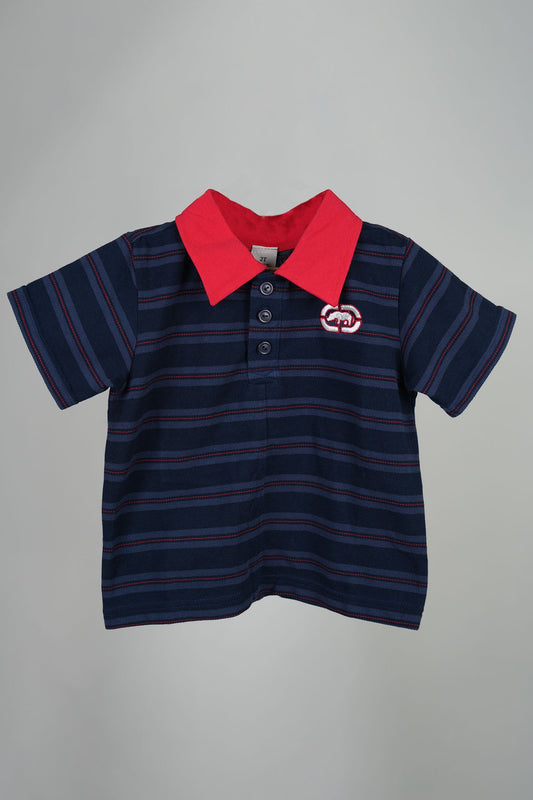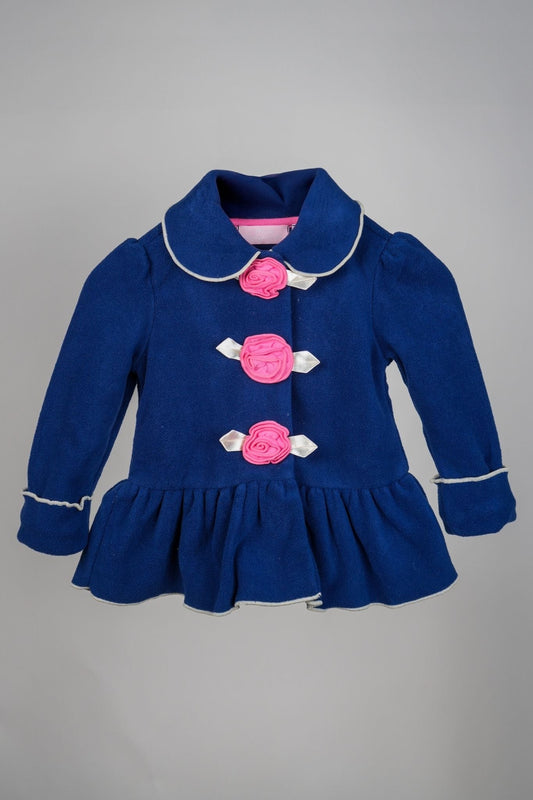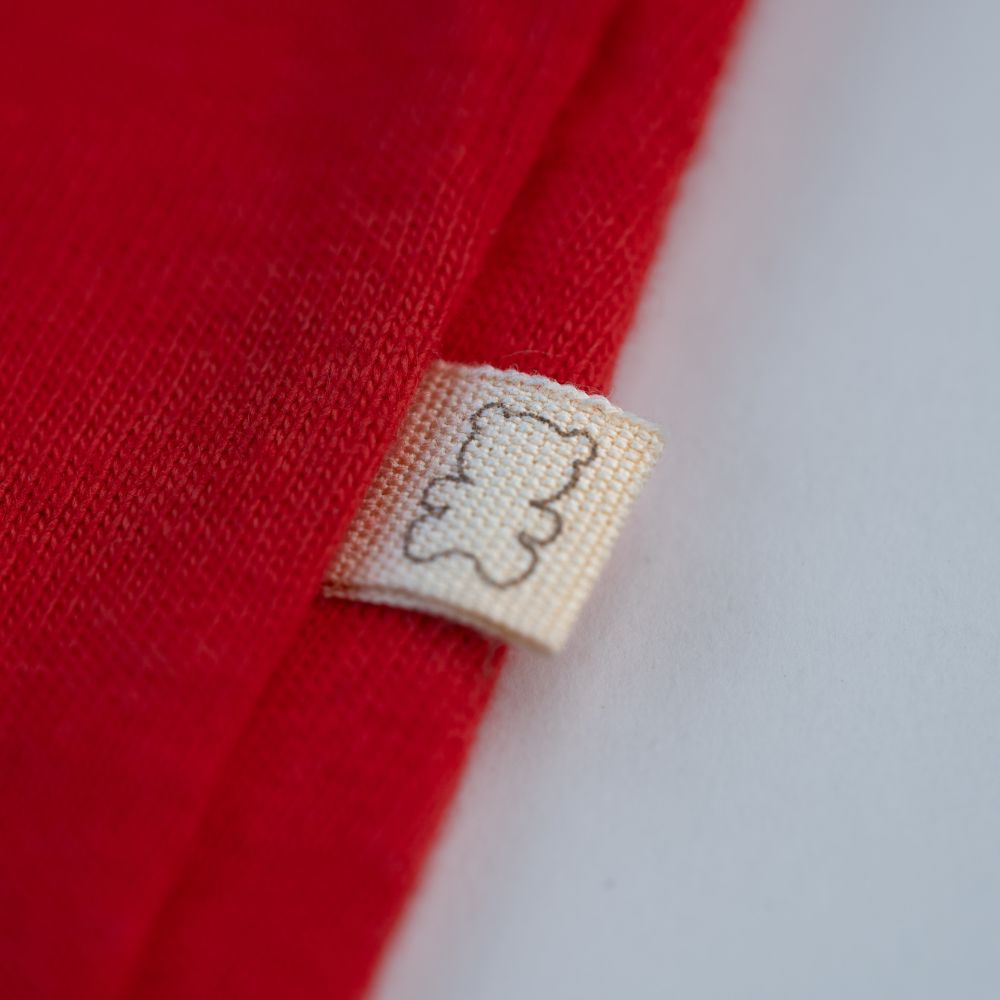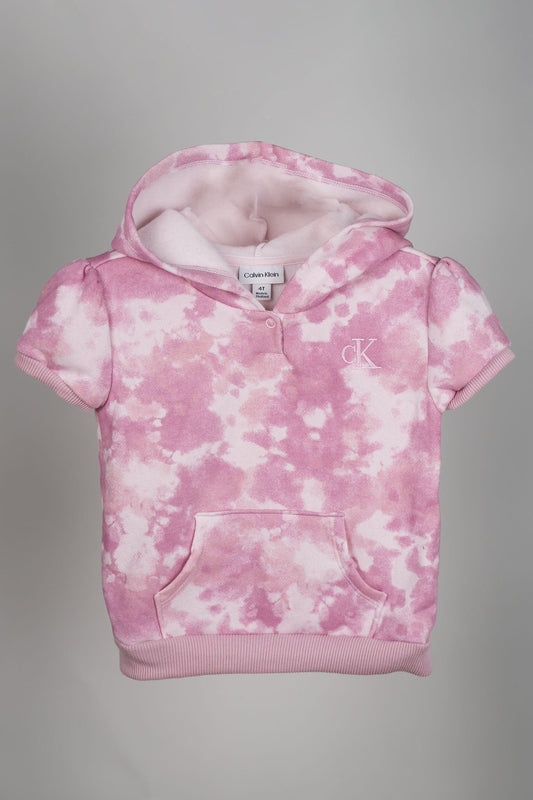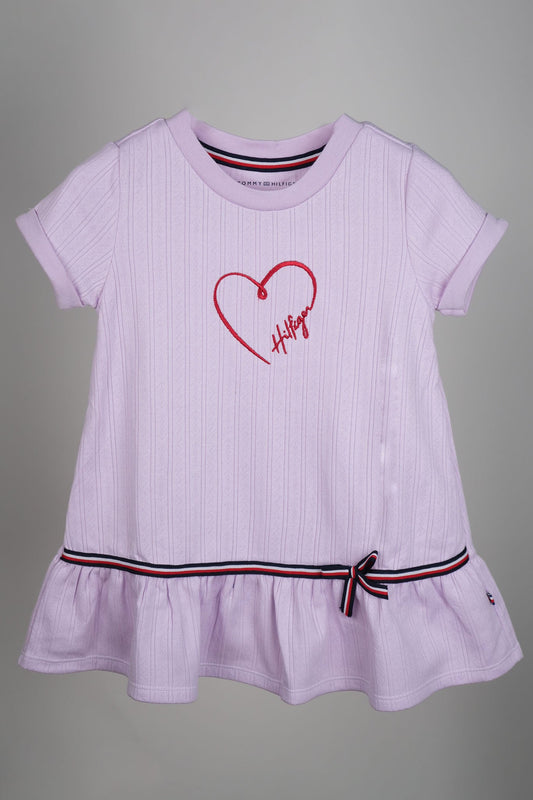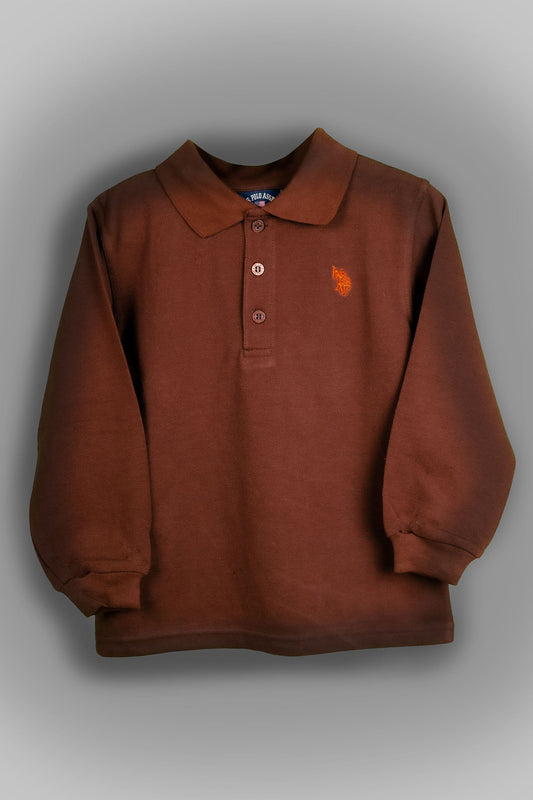The Evolution of Kids' Fashion: From Classic to Contemporary
Introduction
Kids' fashion has come a long way from its humble beginnings, evolving significantly over the decades to reflect changing social norms, technological advancements, and cultural shifts. What was once a simple, functional approach to dressing children has transformed into a dynamic and diverse industry that mirrors the fashion trends of the adult world. In this blog, we’ll take a journey through time to explore the major trends and shifts in children's fashion, from classic styles to contemporary designs.
Early 20th Century: Function Over Form
In the early 1900s, children's clothing was primarily designed for practicality and durability. Boys and girls wore similar garments, often made from sturdy fabrics to withstand the rigors of play. Sailor suits, pinafores, and simple frocks were common, with an emphasis on modesty and functionality. The influence of adult fashion was minimal, and the focus was on creating garments that were easy to clean and comfortable for children to wear.
Practicality and Durability
The early 1900s were a time when the majority of families led a simpler, more agrarian lifestyle. Clothing for children was designed to be highly practical, with garments crafted to withstand the rigors of daily activities. Boys and girls often wore similar outfits that were straightforward and easy to clean. These clothes needed to be durable to survive the wear and tear of outdoor play and household chores.
Simplistic Designs
The designs of children's clothing were modest and devoid of the decorative elements seen in adult fashion. Boys typically wore short pants with suspenders, plain shirts, and sometimes sailor suits, which were popular due to their simplicity and ease of movement. Girls' clothing often consisted of pinafores and simple frocks, which were easy to put on and maintain. The silhouettes were loose and unstructured, allowing for freedom of movement and growth.
Gender-Neutral Styles
In this era, there was little differentiation between boys' and girls' clothing, especially for younger children. The emphasis was on practicality rather than style, and garments were often hand-me-downs that could be worn by any child in the family, regardless of gender. This gender-neutral approach was largely driven by economic necessity and the practicality of having clothes that could be reused within large families.
Fabric Choices
The fabrics used in children's clothing were chosen for their durability and ease of maintenance. Cotton and wool were the predominant materials, valued for their strength and ability to be easily washed. Woolen garments were especially popular in colder climates, providing necessary warmth during harsh winters. These natural fabrics were breathable and suitable for the active lifestyles of children.
Handmade Garments
During the early 20th century, it was common for children's clothing to be handmade, either by mothers at home or by local seamstresses. This practice not only saved money but also allowed for custom fittings and adjustments as children grew. The handmade nature of these garments meant that they were often simple in design, with an emphasis on functional sewing techniques rather than decorative embellishments.
Modesty and Social Norms
The clothing of the early 1900s reflected the modesty standards of the time. High necklines, long sleeves, and knee-length hems were the norm for both boys and girls. The societal expectation was that children should be dressed modestly, mirroring the conservative values of the era. This modest approach to children's fashion was also a way to instill discipline and propriety from a young age.
Influence of Industrialization
The industrial revolution had begun to influence fashion by the turn of the century, introducing mass-produced clothing. However, for many families, handmade garments remained the standard due to economic constraints. The early stages of industrialization in fashion meant that ready-to-wear children's clothing was becoming more accessible, but it was still a luxury for many.
The 1950s: A New Era of Style
The post-World War II era brought significant changes to children's fashion. With the economic boom of the 1950s, families had more disposable income, and fashion became a way to express individuality. Children's clothing started to mirror adult fashion trends more closely. For boys, this meant button-down shirts, trousers, and blazers, while girls wore dresses with fuller skirts, often adorned with bows and ribbons. The introduction of bright colors and playful patterns marked a departure from the drab and utilitarian styles of the previous decades.
Influence of Media and Popular Culture
The 1950s was a time when television and movies became central to everyday life, profoundly influencing fashion trends. Children's fashion was no exception. Iconic TV shows and films featuring well-dressed young stars set the tone for what was considered stylish. Characters from shows like "Leave It to Beaver" and movies starring Shirley Temple became fashion icons for children. The media's influence meant that children, like their parents, began to desire clothing that was fashionable and reflective of the latest trends.
Rise of Consumer Culture
The post-war economic boom led to increased disposable income for many families, which in turn fueled a rise in consumerism. Parents were more willing and able to spend money on stylish clothing for their children. Department stores and catalogs began to feature extensive children's sections, offering a wide array of fashionable options. This accessibility made it easier for families to dress their children in the latest styles, contributing to the overall emphasis on fashion during this period.
Gender-Specific Styles
Unlike the more gender-neutral styles of the early 20th century, the 1950s saw a clear distinction between boys' and girls' clothing. Boys were often dressed in miniature versions of men's clothing, including tailored suits, dress shirts, and slacks. Casual wear for boys included jeans, which became increasingly popular thanks to cultural icons like James Dean. Girls, on the other hand, wore dresses and skirts that emphasized femininity. Dresses often featured full skirts, petticoats, and vibrant patterns, reflecting the era's love for color and flair.
Fashion Trends for Girls
For girls, the 1950s was an era of delightful, playful fashion. Dresses were the staple of a young girl's wardrobe, often adorned with ruffles, bows, and lace. Polka dots, florals, and gingham prints were popular, reflecting the cheerful and optimistic spirit of the times. The "poodle skirt" became an iconic piece, featuring a wide, swinging circle skirt with a poodle applique. These skirts were often paired with cardigans and bobby socks, completing the quintessential 1950s look.
Fashion Trends for Boys
Boys' fashion in the 1950s took cues from adult male fashion but with a playful twist. Plaid shirts, argyle sweaters, and chinos were common. For formal occasions, boys were dressed in suits, often with bow ties or neckties, mirroring the styles worn by their fathers. The introduction of the "Ivy League" look, characterized by blazers, loafers, and preppy styles, also influenced boys' fashion. This decade also saw the rise of casual wear, with jeans and T-shirts becoming wardrobe staples.
The Influence of Subcultures
The 1950s also witnessed the emergence of subcultures that influenced children's fashion. The "rock and roll" culture, epitomized by figures like Elvis Presley, brought a rebellious edge to fashion. Leather jackets, denim, and slicked-back hair became symbols of the rock and roll style. While these trends were more prominent among teenagers, younger children were not entirely immune to their influence, and parents often dressed their kids in styles that nodded to these emerging subcultures.
Quality and Craftsmanship
Despite the focus on style, the 1950s did not abandon the importance of quality and craftsmanship in children's clothing. Garments were made from high-quality materials and were constructed to last. This combination of durability and style meant that children's clothing from this era was both practical and fashionable. Hand-me-downs were still common, but the durability of these clothes ensured they remained in good condition for successive children.
The 1960s and 1970s: Freedom and Expression
The 1960s and 1970s were transformative decades in many ways, and children's fashion was no exception. This era was characterized by a spirit of freedom and expression, with a significant departure from the more structured and conservative styles of the 1950s. Social changes, cultural revolutions, and a growing emphasis on individuality all played a role in shaping fashion trends for kids during these decades.
The 1960s: A Decade of Revolution
The 1960s were marked by significant social and cultural upheavals. The civil rights movement, the rise of counterculture, and the influence of rock and roll music all contributed to a fashion revolution. For children, this meant more relaxed, casual, and expressive clothing that reflected the broader societal shifts.
Influences from Adult Fashion
Children's fashion in the 1960s often mirrored adult fashion trends, but with a playful twist. As adults embraced more casual and expressive styles, so too did children. The Mod movement, characterized by bold colors, geometric patterns, and futuristic designs, found its way into kids' clothing. Mini skirts, shift dresses, and colorful tights were popular among girls, while boys wore bell-bottom pants, turtlenecks, and vests.
Gender-Neutral Trends
The 1960s also saw the rise of more gender-neutral fashion trends. Unisex clothing became more common, with both boys and girls wearing similar styles. T-shirts, jeans, and sneakers became staples in children's wardrobes, reflecting the era's emphasis on comfort and practicality. This shift towards more relaxed and versatile clothing allowed children greater freedom of movement and self-expression.
Psychedelic Patterns and Colors
One of the most distinctive features of 1960s fashion was the use of bright, psychedelic patterns and colors. Tie-dye, paisley prints, and bold color combinations were all the rage. These eye-catching designs were not limited to adults; children's clothing embraced the same vibrant aesthetics. Girls' dresses and boys' shirts often featured these lively patterns, adding a sense of fun and energy to their wardrobes.
The 1970s: A Celebration of Individuality
The 1970s continued the trends of the 1960s but with an even greater emphasis on individuality and self-expression. This decade was characterized by an eclectic mix of styles, with influences ranging from disco to bohemian to punk. Children's fashion reflected this diversity, offering a wide array of options for kids to express their personalities.
Hippie Influences & Disco Fever
The bohemian and hippie movements of the 1970s had a profound impact on children's fashion. Flowy dresses, fringed vests, and peasant blouses were popular for girls, while boys wore bell-bottom jeans, tie-dye shirts, and embroidered vests. Natural materials like cotton and denim were favored, reflecting the era's appreciation for simplicity and authenticity.
The disco craze of the late 1970s brought a touch of glamour to children's fashion. Shiny fabrics, sequins, and bold accessories became fashionable for special occasions. Girls wore dresses with flared skirts and glittery details, while boys sported wide-collared shirts and platform shoes. The influence of disco added a sense of excitement and playfulness to children's wardrobes.
Punk and Rock Influences
Towards the end of the 1970s, the punk rock movement began to influence children's fashion. While this style was more prominent among teenagers, younger children also embraced elements of the punk aesthetic. Graphic tees, ripped jeans, and leather jackets became popular, reflecting the rebellious spirit of the era. This trend highlighted the growing desire for kids to express their individuality through their clothing choices.
Gender Fluidity in Fashion
The 1970s also saw a continued move towards gender fluidity in fashion. The lines between boys' and girls' clothing became increasingly blurred, with many styles being adopted by both genders. Overalls, dungarees, and T-shirts were common for all children, emphasizing comfort and practicality over strict gender norms. This trend towards gender-neutral fashion allowed children more freedom to explore their personal styles without the constraints of traditional gender expectations.
The Role of Media and Pop Culture
Just as in the 1950s, media and pop culture played a significant role in shaping children's fashion during the 1960s and 1970s. Television shows, movies, and music stars influenced the clothing choices of young audiences. Popular children's shows like "The Brady Bunch" and "Sesame Street" featured characters whose fashion choices were emulated by children. Music icons like The Beatles and David Bowie also had a significant impact, with their bold and innovative styles inspiring kids to experiment with their looks.

The 1980s: Bold and Bright
The 1980s were a decade defined by bold and bright fashion choices, and children's clothing was no exception. This era brought an explosion of color, creativity, and experimentation in kids' fashion, reflecting the vibrant pop culture and dynamic social changes of the time. From neon colors to eclectic patterns, children's fashion in the 1980s was all about making a statement and having fun with style.
Neon Colors and Bright Patterns
One of the most iconic features of 1980s fashion was the use of neon colors and bright patterns. Children's clothing embraced this trend wholeheartedly, with neon pinks, greens, yellows, and blues becoming staples in kids' wardrobes. These eye-catching hues were often paired with bold patterns such as stripes, polka dots, and geometric designs, creating a lively and energetic look. The use of neon colors and bright patterns not only made children's clothing visually appealing but also reflected the exuberant and optimistic spirit of the decade.
Influence of Pop Culture
Pop culture had a significant impact on children's fashion in the 1980s. Television shows, movies, and music stars played a major role in shaping the styles that kids wanted to wear. Popular shows like "The Smurfs," "Transformers," and "My Little Pony" featured characters whose fashion choices were emulated by children. Music icons like Madonna and Michael Jackson also influenced kids' fashion, with their distinctive styles inspiring everything from oversized jackets to fingerless gloves. Cartoon characters, superheroes, and beloved TV personalities often adorned children's clothing, making their outfits both trendy and fun.
Athletic and Casual Wear
The 1980s saw a rise in the popularity of athletic and casual wear for children. Tracksuits, sweatpants, and sneakers became everyday attire, reflecting the era's focus on fitness and active lifestyles. Brands like Nike and Adidas gained prominence, and their logo-adorned clothing became highly sought after. The casual wear trend also extended to denim, with acid-wash jeans, jean jackets, and denim skirts becoming wardrobe essentials. These styles were not only comfortable but also versatile, allowing kids to transition easily from playtime to more formal occasions.
Layering and Mix-and-Match
Layering was a key trend in 1980s children's fashion, with kids often wearing multiple layers of clothing to create a unique and personalized look. This included layering T-shirts over long-sleeve tops, pairing skirts with leggings, and adding vests or jackets for extra flair. The mix-and-match approach allowed children to experiment with different combinations of colors and patterns, fostering creativity and individuality. Accessories like headbands, scrunchies, and colorful socks were also popular, adding the final touches to layered outfits.
Gender Fluidity in Fashion
The 1980s continued the trend of gender fluidity in children's fashion. Many clothing items were designed to be unisex, allowing boys and girls to wear similar styles. Overalls, graphic T-shirts, and sweatshirts were common for all children, reflecting the era's move towards more inclusive and flexible fashion choices. This trend allowed children greater freedom to express themselves without the constraints of traditional gender norms, promoting a sense of equality and individuality.
Designer Labels and Branding
The 1980s marked the rise of designer labels and branding in children's fashion. Parents increasingly sought out high-quality, stylish clothing from well-known brands, and designers began creating collections specifically for kids. Labels like Ralph Lauren, Calvin Klein, and Guess became popular for their fashionable and durable children's clothing. The emphasis on designer labels and branding not only elevated the quality of kids' fashion but also introduced a sense of prestige and exclusivity to children's wardrobes.

The 1990s: Casual and Comfortable
The 1990s marked a significant shift in children's fashion towards casual and comfortable styles. This decade was characterized by a more relaxed and practical approach to clothing, influenced by various cultural and social changes. The emphasis on comfort, practicality, and a laid-back aesthetic defined the fashion choices of this era, making it a memorable period in the evolution of kids' fashion.
Grunge and Minimalism
The grunge movement, popularized by bands like Nirvana and Pearl Jam, had a notable influence on 1990s fashion. This trend extended to children's clothing, with kids donning flannel shirts, oversized sweaters, and ripped jeans. The grunge look was all about embracing a rugged, unpolished aesthetic, reflecting a sense of rebellion and nonconformity.
At the same time, minimalism became a significant trend, characterized by simple, clean lines and muted colors. This style focused on the idea that less is more, and children's clothing followed suit with plain T-shirts, simple dresses, and straightforward designs. The minimalist approach prioritized comfort and ease of movement, making it a practical choice for active kids.
Denim Everywhere
Denim was a staple in 1990s children's fashion, appearing in various forms such as jeans, jackets, skirts, and overalls. The versatility and durability of denim made it a favorite among parents and kids alike. Whether it was classic blue jeans or colorful denim jackets, this fabric was a key component of many outfits. Denim overalls, in particular, became iconic, often paired with T-shirts or sweaters for a casual, everyday look. The 1990s also saw the rise of baggy jeans and shorts, which offered both comfort and a trendy, relaxed fit.
Athletic and Streetwear Influence
The influence of athletic and streetwear on 1990s fashion cannot be overstated. Brands like Nike, Adidas, and Reebok became household names, and their logo-adorned clothing was highly sought after. Tracksuits, hoodies, and sneakers became wardrobe essentials for kids, reflecting the growing popularity of sports and an active lifestyle. This trend was not only about practicality but also about making a style statement. The iconic sports logos and designs allowed kids to showcase their interests and stay comfortable while playing or engaging in physical activities.
Cartoon and Pop Culture Trends
Cartoons and pop culture had a significant impact on 1990s children's fashion. Characters from popular TV shows and movies were frequently featured on clothing, making it a fun and engaging experience for kids. From "The Lion King" to "Power Rangers" and "Pokémon," these beloved characters adorned T-shirts, pajamas, backpacks, and more. This trend allowed kids to express their fandom and connect with their favorite shows and movies. Additionally, the rise of boy bands and pop stars like the Spice Girls and Backstreet Boys influenced fashion, with kids emulating the styles of their favorite music idols.
Gender-Neutral Fashion
The 1990s continued to blur the lines between traditional gender roles in fashion. Many clothing items were designed to be unisex, allowing for greater flexibility and inclusivity. Baggy jeans, graphic T-shirts, and baseball caps were popular choices for both boys and girls. This trend towards gender-neutral fashion reflected a broader cultural shift towards equality and inclusiveness, allowing children to explore their identities and preferences without being confined to traditional gender norms.
Layering and Mix-and-Match
Layering was a key trend in 1990s children's fashion, with kids often combining multiple pieces to create unique and personalized looks. This included layering T-shirts under dresses, pairing skirts with leggings, and adding vests or jackets to outfits. The mix-and-match approach allowed for creativity and experimentation, enabling kids to express their individuality. Accessories like bandanas, scrunchies, and colorful socks added the final touches to layered outfits, enhancing their overall appeal.

The 2000s: Tech-Savvy Trends
The 2000s ushered in a new era of children's fashion, heavily influenced by technological advancements and the rise of the internet. This decade saw a blend of futuristic styles, digital influences, and a continuation of the casual, comfort-focused trends from the 1990s. The integration of technology into everyday life began to shape the way children dressed, creating a distinctive and innovative fashion landscape.
Digital Influence and Online Shopping
The explosion of the internet and digital media had a profound impact on children's fashion in the 2000s. Online shopping became increasingly popular, offering parents and kids a convenient way to access a wide variety of clothing options. Brands and retailers started establishing strong online presences, making it easier for consumers to browse and purchase the latest trends from the comfort of their homes. This shift not only expanded the availability of fashion choices but also allowed for more personalized shopping experiences.
Pop Culture and Celebrity Endorsements
Pop culture continued to play a significant role in shaping children's fashion during the 2000s. Celebrities, musicians, and TV shows heavily influenced the styles that kids wanted to emulate. Popular TV shows like "Hannah Montana" and "Lizzie McGuire" showcased trendy outfits that quickly became must-haves for young fans. Celebrity-endorsed clothing lines and collaborations became a common trend, with stars like Mary-Kate and Ashley Olsen launching their own fashion brands. These endorsements brought a sense of glamour and excitement to children's fashion, making it more aspirational.
Tech-Inspired Designs and Fabrics
The 2000s saw a surge in tech-inspired designs and fabrics in children's clothing. Reflective materials, metallic finishes, and neon colors became popular, giving outfits a futuristic and edgy look. Performance fabrics, commonly used in sportswear, started to make their way into everyday clothing for kids. These materials offered benefits like moisture-wicking, breathability, and durability, making them ideal for active children. Tech-savvy designs often included functional elements such as zippered pockets, adjustable straps, and convertible features, enhancing both style and practicality.
Customization and Personalization
Customization became a major trend in the 2000s, driven by advancements in technology and manufacturing. Children and parents could now personalize their clothing with names, initials, or unique designs. This trend was particularly popular with accessories like backpacks, hats, and sneakers. The ability to create custom pieces allowed kids to express their individuality and stand out from the crowd. Brands like Nike and Converse capitalized on this trend by offering customizable options for their products, further fueling the desire for personalized fashion.
Eco-Friendly and Sustainable Choices
As awareness of environmental issues grew, the 2000s also saw the beginning of a shift towards eco-friendly and sustainable fashion for children. Brands started to incorporate organic and recycled materials into their collections, emphasizing the importance of sustainability. Parents became more conscious of the environmental impact of their purchasing decisions, seeking out clothing made from natural fibers and produced through ethical practices. This trend laid the groundwork for the increased focus on sustainability that would become more prominent in the following decades.
Y2K Aesthetics and Trends
The early 2000s were characterized by the distinctive Y2K aesthetic, which embraced bold and futuristic styles. Low-rise jeans, cropped tops, and shiny fabrics were all the rage. Accessories like butterfly clips, chunky belts, and platform shoes completed the look. This trend was heavily influenced by the optimism and excitement surrounding the new millennium, reflecting a sense of innovation and forward-thinking. The Y2K aesthetic was all about making a statement and embracing new possibilities, resonating with the adventurous spirit of young fashion enthusiasts.
Streetwear and Urban Influence
Streetwear continued to gain momentum in the 2000s, blending elements of urban culture and sportswear into mainstream fashion. Brands like Adidas, Puma, and Supreme became increasingly popular among kids, offering stylish yet comfortable clothing options. Hoodies, graphic tees, cargo pants, and sneakers became wardrobe staples. The influence of hip-hop and skate culture was evident in the oversized silhouettes and bold graphics that defined streetwear. This trend celebrated individuality and self-expression, allowing kids to adopt a cool and effortlessly stylish look.
Global Fashion Trends
The internet's global reach allowed children to be exposed to fashion trends from around the world. This increased exposure led to a fusion of styles, with elements of Japanese street fashion, European chic, and American casualwear all finding their way into children's wardrobes. Kids became more adventurous in their fashion choices, mixing and matching different influences to create unique looks. The ability to access global fashion trends online democratized style, making it possible for children to experiment with a diverse range of aesthetics.

The 2010s: Diversity and Sustainability in Focus
The 2010s marked a significant shift in children's fashion, driven by an increasing emphasis on diversity, sustainability, and technological integration. This decade saw the rise of inclusive fashion, eco-friendly practices, and the influence of social media in shaping trends. The 2010s were characterized by a blend of tradition and innovation, with a strong focus on making fashion accessible and responsible.
Social Media's Influence on Kids' Fashion
The 2010s witnessed the explosion of social media platforms like Instagram, YouTube, and Pinterest, which became powerful tools for influencing children's fashion trends. Parents and kids alike turned to social media for inspiration, following fashion influencers, bloggers, and celebrity children. This new wave of digital influence democratized fashion, allowing smaller brands and individual designers to gain visibility alongside established names. Social media also fostered a sense of community, where parents could share tips, reviews, and styling ideas.
Rise of Sustainable and Ethical Fashion
Sustainability became a cornerstone of children's fashion in the 2010s. The decade saw a growing awareness of environmental issues and a demand for more responsible fashion choices. Brands responded by incorporating organic, recycled, and ethically sourced materials into their collections. Initiatives like fair trade and zero-waste production became more prominent, reflecting a commitment to reducing the fashion industry's ecological footprint. Parents increasingly sought out brands that prioritized sustainability, looking for clothing that was not only stylish but also kind to the planet.
Emphasis on Comfort and Practicality
The trend towards comfort and practicality continued to dominate children's fashion in the 2010s. Parents prioritized clothing that allowed for ease of movement and could withstand the rigors of play. Soft, breathable fabrics like cotton and bamboo became staples, while designs often featured adjustable elements to accommodate growth spurts. Athleisure, a blend of athletic and leisurewear, gained popularity, offering stylish yet functional options for kids. This trend mirrored the broader cultural shift towards a more casual and health-conscious lifestyle.
Inclusive and Adaptive Fashion
Inclusivity took center stage in the 2010s, with a growing recognition of the need for adaptive clothing for children with disabilities. Brands began to design clothing that was accessible and functional for all children, regardless of their physical abilities. Adaptive features like magnetic closures, easy-to-use fastenings, and sensory-friendly fabrics became more common. This shift towards inclusive fashion was driven by a broader societal push for diversity and representation, ensuring that all children could feel confident and comfortable in their clothing.
Influence of Technology and Smart Fabrics
Technological advancements continued to shape children's fashion in the 2010s. The development of smart fabrics introduced new possibilities, with materials that could regulate temperature, repel stains, and even monitor health. Tech-infused clothing, such as UV-protective swimsuits and anti-bacterial school uniforms, offered practical benefits that appealed to parents. Additionally, the integration of technology in the shopping experience, through virtual fitting rooms and personalized recommendations, enhanced the convenience and enjoyment of buying kids' clothing.
Return of Nostalgic Styles
The 2010s also saw a resurgence of nostalgic styles, with retro-inspired clothing making a comeback. Parents and designers drew inspiration from past decades, bringing back elements like vintage prints, high-waisted pants, and classic silhouettes. This trend offered a sense of familiarity and comfort, while also allowing for creative reinterpretations. Nostalgia-driven fashion provided a bridge between generations, with parents reminiscing about their own childhood styles and sharing them with their children.
Gender-Neutral Fashion
Gender-neutral fashion gained momentum in the 2010s, challenging traditional norms and offering more inclusive options. Brands began to create collections that were not confined by gender-specific colors or styles, allowing children to express themselves freely. This movement was part of a broader cultural shift towards acceptance and diversity, promoting the idea that clothing should be about personal expression rather than adhering to societal expectations. Gender-neutral fashion empowered children to explore their identities and preferences without limitations.
Influence of Global Fashion Trends
Globalization and the internet facilitated the exchange of fashion ideas across cultures, leading to a fusion of styles in children's clothing. Parents and kids had access to a wide array of global trends, from Scandinavian minimalism to Japanese streetwear. This cross-cultural exchange enriched the fashion landscape, offering diverse options and fostering a greater appreciation for different aesthetics. The 2010s celebrated this cultural diversity, encouraging children to experiment with and embrace a variety of fashion influences.
Customization and Personalization
Customization remained a key trend in the 2010s, with advancements in technology making it easier for parents and children to create personalized clothing. From monogrammed accessories to bespoke outfits, the ability to customize clothing added a unique touch to children's wardrobes. This trend catered to the desire for individuality and specialness, allowing kids to stand out and feel a sense of ownership over their fashion choices. Personalized clothing also made for thoughtful and cherished gifts, adding an extra layer of meaning.

Contemporary Styles: Blending Innovation with Tradition
In recent years, children's fashion has continued to evolve, embracing contemporary styles that reflect both innovation and a nod to tradition. The fusion of cutting-edge trends with timeless elements has created a dynamic and exciting landscape for kids' clothing. Today's fashion for children is characterized by versatility, creativity, and a strong emphasis on individuality. Let's explore some of the key features of contemporary styles in kids' fashion.
Minimalist and Modern Aesthetics
Contemporary children's fashion often leans towards minimalist and modern aesthetics. Clean lines, simple silhouettes, and neutral color palettes dominate many collections, offering a sleek and sophisticated look. This minimalist approach not only appeals to parents who appreciate understated elegance but also provides a versatile foundation for kids to mix and match their outfits. Brands like Mini Rodini and Zara Kids exemplify this trend, with collections that combine practicality with stylish simplicity.
Athleisure and Sportswear
Athleisure, the blend of athletic and leisurewear, continues to be a major trend in contemporary kids' fashion. Comfortable, functional, and stylish, athleisure pieces are perfect for active children who need clothing that can keep up with their energy. Brands such as Nike, Adidas, and Under Armour offer a wide range of options, from tracksuits and leggings to sporty dresses and joggers. The integration of performance fabrics like moisture-wicking materials and stretch knits ensures that kids can move freely and comfortably, whether they're at school, playing sports, or lounging at home.
Gender-Neutral Designs
Gender-neutral fashion has gained significant traction, reflecting a more inclusive and progressive approach to children's clothing. Contemporary styles often feature designs that are not confined by traditional gender norms, offering a range of options that can be worn by any child. This shift towards gender-neutral fashion promotes individuality and allows children to express themselves without limitations. Brands like Tootsa MacGinty and Wildly Co. are at the forefront of this movement, creating collections that celebrate diversity and encourage self-expression.
Eco-Friendly and Sustainable Fashion
Sustainability remains a cornerstone of contemporary kids' fashion. Parents today are more conscious of the environmental impact of their purchasing decisions and seek out brands that prioritize eco-friendly practices. This has led to a rise in sustainable fashion, with many brands incorporating organic materials, recycled fabrics, and ethical production methods into their collections. Companies like Stella McCartney Kids and Patagonia Kids are known for their commitment to sustainability, offering stylish and responsibly made clothing that appeals to environmentally conscious families.
Personalized and Customizable Clothing
Customization continues to be a popular trend, allowing children to have a say in their fashion choices. Personalized clothing, from monogrammed jackets to bespoke dresses, adds a unique and special touch to kids' wardrobes. Advances in technology have made it easier than ever to create custom pieces, with many brands offering online tools for designing personalized items. This trend not only fosters creativity but also gives children a sense of ownership over their clothing, making them feel special and unique.
Bold Prints and Patterns
While minimalist styles are prevalent, there is also a strong demand for bold prints and patterns in contemporary kids' fashion. Vibrant colors, playful motifs, and eye-catching designs are a hallmark of many modern collections. These bold styles reflect the joyful and energetic spirit of children, allowing them to express their personalities through their clothing. Brands like Catimini and Boden Kids are known for their use of bright, fun prints that make a statement and bring a sense of whimsy to everyday wear.
Tech-Enhanced Clothing
The integration of technology into children's fashion is another exciting development in contemporary styles. Smart fabrics and wearable tech offer practical benefits, such as UV protection, temperature regulation, and even health monitoring. These innovations provide added functionality to clothing, making them more than just fashion items but also tools for ensuring children's well-being. Brands like UVSkinz offer UV-protective clothing, while companies like Owlet create wearable tech for monitoring infants' health, blending fashion with cutting-edge technology.
Cultural Influences and Global Trends
Contemporary kids' fashion is increasingly influenced by global trends and cultural diversity. The internet and social media have made it easier to access and share fashion ideas from around the world, resulting in a rich tapestry of styles. Parents and children are now exposed to a wide range of cultural influences, from Japanese streetwear to Scandinavian minimalism. This cross-cultural exchange enriches the fashion landscape, offering diverse options and fostering a greater appreciation for different aesthetics.
Adaptive Fashion
Adaptive fashion, designed to meet the needs of children with disabilities, is gaining more attention in contemporary styles. These designs prioritize functionality and comfort, with features like magnetic closures, adjustable straps, and sensory-friendly fabrics. Adaptive clothing ensures that all children can enjoy fashion that is both stylish and practical. Brands like Tommy Hilfiger Adaptive and MagnaReady are leading the way in this important segment, creating inclusive clothing that empowers all children to dress with confidence.

